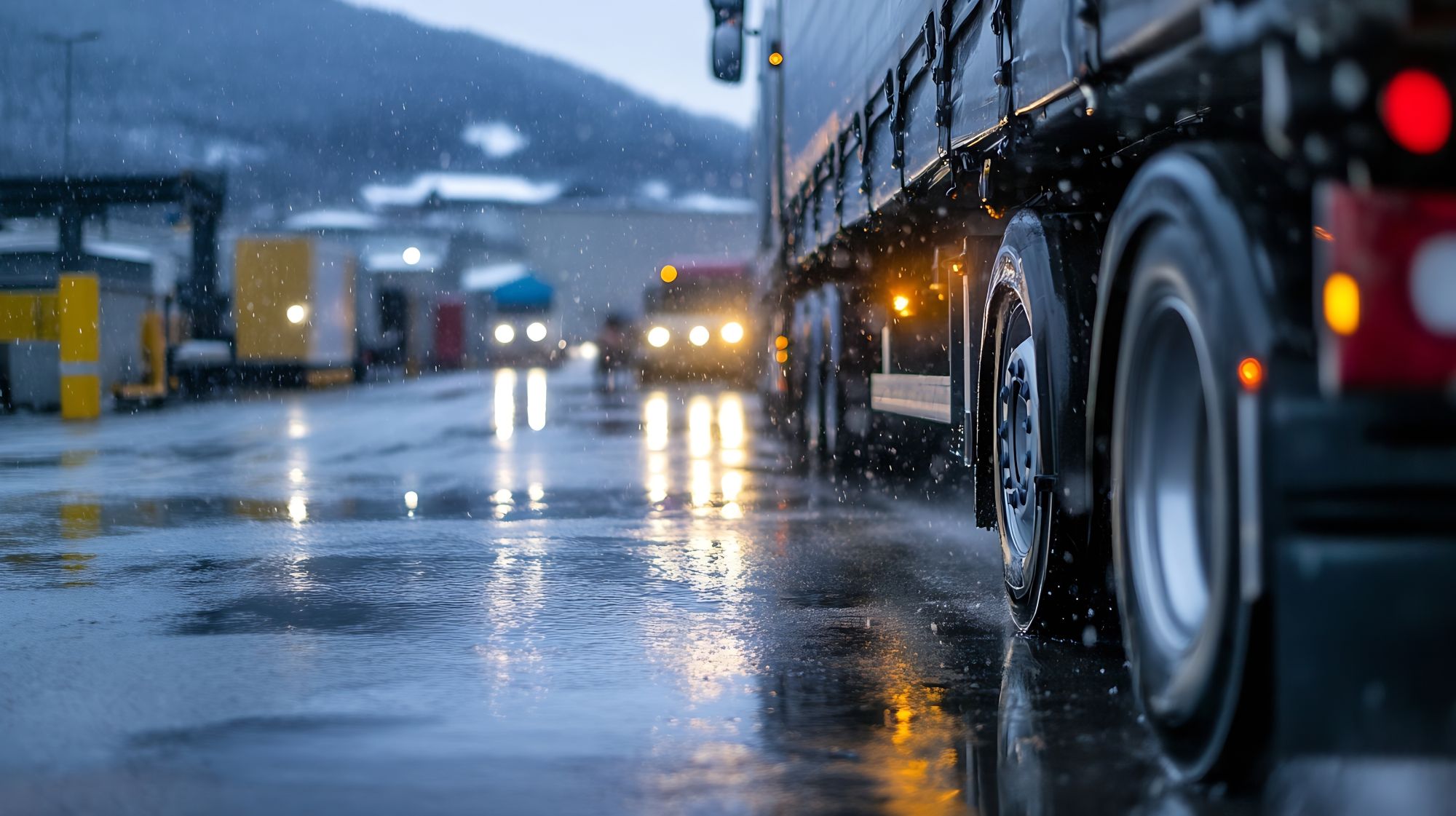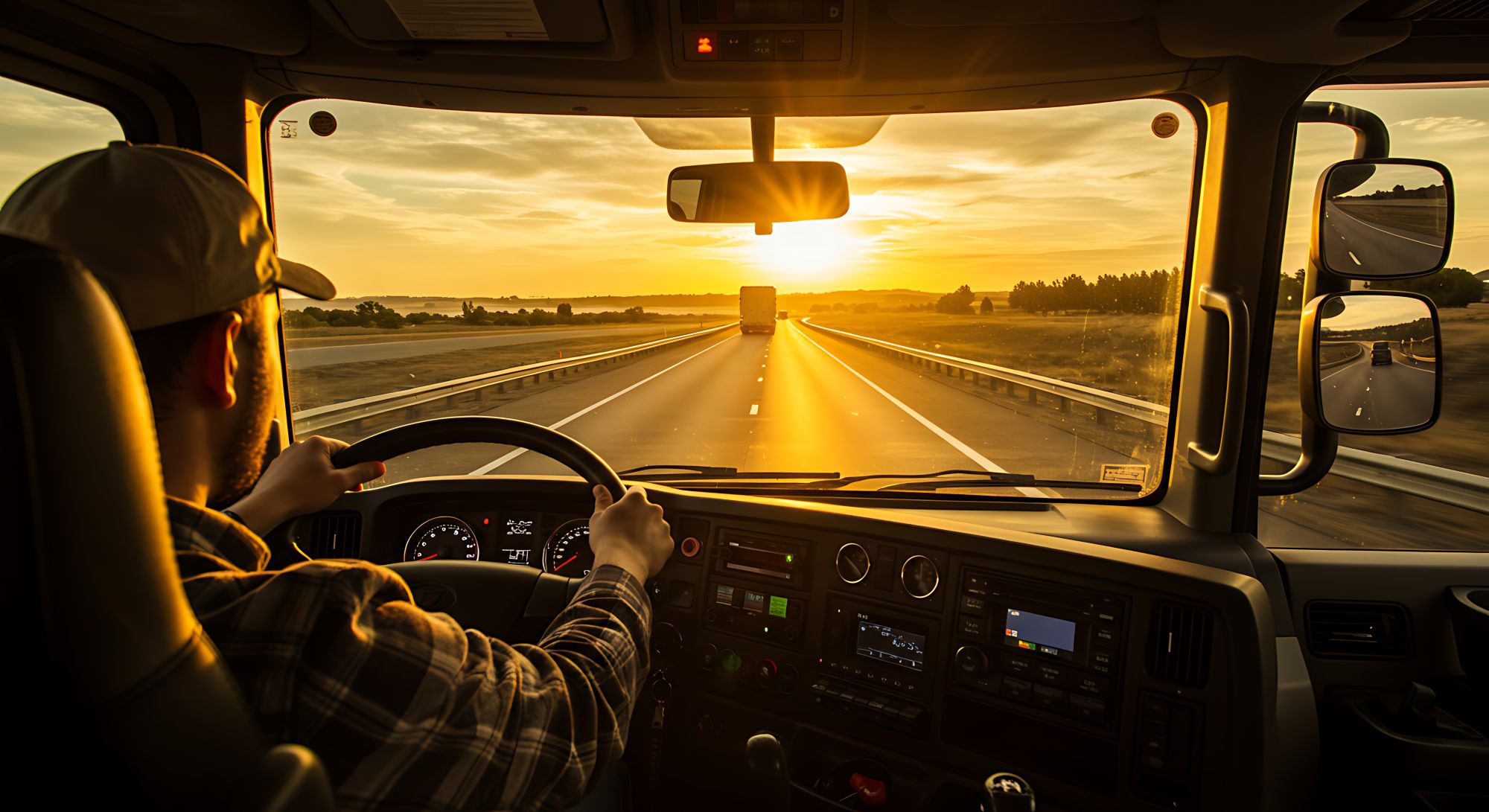
Guest
Cómo afecta el cambio climático al sector de la movilidad
Creado: 21/07/2025
•
Actualizado: 21/07/2025
El cambio climático ya no es un riesgo lejano. Para quienes trabajan en el transporte por carretera, es una realidad operativa cotidiana que cada año es más difícil de ignorar. Desde olas de calor que derriten el asfalto hasta inundaciones que cortan las principales rutas, el impacto de un clima cambiante está presente en el negocio del transporte de mercancías.
Para los gestores de flotas, esto significa navegar por normativas cambiantes, actualizar la infraestructura y replantearse la planificación de la continuidad. Para los conductores, significa adaptarse a los nuevos riesgos en la carretera, desde reventones de neumáticos a plazos de entrega interrumpidos. Y para todo el sector, indica la necesidad de un enfoque de la movilidad más resistente y consciente del clima.
Las perturbaciones meteorológicas son una amenaza operativa
En julio de 2022, el Reino Unido vivió su día más caluroso jamás registrado. Cuando las temperaturas subieron a 40℃, las carreteras empezaron a reblandecerse, con tramos de la A14 cerrados debido a la degradación de la superficie. Los operadores de flotas se vieron obligados a redirigir las entregas, a veces con poca antelación, mientras las temperaturas de los motores se disparaban y los vehículos luchaban por mantener su rendimiento.
Ese mismo año, los fuertes vientos de la tormenta Eunice (https://www.theguardian.com/world/2022/feb/18/flights-and-trains-cancelled-as-storm-eunice-hits-europe) causaron daños generalizados en los corredores de transporte de mercancías de Europa Occidental, volcando vehículos de gran altura y dañando cargamentos sensibles a la temperatura. Mientras tanto, en enero de 2024, la tormenta Henk inundó vastas zonas del centro de Inglaterra. Las principales rutas de las Midlands quedaron intransitables y algunos conductores se quedaron tirados durante horas.
No se trata de hechos aislados. Son signos de un sistema de transporte cada vez más vulnerable a las amenazas climáticas. El firme de las carreteras, los componentes de los vehículos y las redes logísticas se ven sometidos a la prueba de las condiciones cambiantes, y las consecuencias se dejan sentir en toda la cadena de suministro.
Cadenas de suministro perturbadas
Cuando se trata de trastornos relacionados con el clima, las repercusiones no sólo se dejan sentir en las rutas individuales. Cadenas de suministro enteras se ven afectadas, a veces sin previo aviso. En los Países Bajos, la subida del nivel del mar y el aumento de las precipitaciones están obligando a las autoridades y las empresas a reevaluar la resistencia de las infraestructuras logísticas críticas, sobre todo en las zonas industriales bajas.
El puerto de Rotterdam, el mayor de Europa, ha tomado medidas activas (https://www.c40.org/wp-content/uploads/2022/02/C40-Good-Practice-Guide-Climate-Change-Adaptation-in-Delta-Cities.pdf) para adaptarse al riesgo climático, reforzando los muros de los muelles, elevando las vías de acceso y mejorando los sistemas de aguas pluviales para protegerlos de las inundaciones. Los centros logísticos de interior también están bajo escrutinio, ya que las condiciones meteorológicas extremas han puesto de manifiesto la vulnerabilidad de las vías de acceso y el drenaje.
Innovación en el transporte
La tecnología de las flotas está mejorando rápidamente, sobre todo en lo que respecta a la electrificación y el diagnóstico inteligente. Pero el cambio climático está creando nuevas tensiones incluso para los vehículos más avanzados. La eficiencia de las baterías puede disminuir hasta un 20% en climas fríos, lo que reduce la autonomía efectiva de las furgonetas eléctricas. Mientras tanto, las altas temperaturas aceleran la degradación de los neumáticos y suponen una carga adicional para los sistemas de refrigeración de los vehículos.
Para hacer frente a estos problemas, algunos operadores están invirtiendo en sistemas de mantenimiento predictivo que utilizan la telemática para anticipar el desgaste y programar las reparaciones antes de que se produzcan fallos costosos. Otros están mejorando los sistemas de confort de la cabina para proteger el bienestar del conductor durante los periodos de calor o frío extremos. Aunque estos cambios suponen una inversión inicial, pueden reportar dividendos en tiempo de actividad, seguridad y retención de los conductores.
El aumento del riesgo climático también está modificando los seguros. Algunas aseguradoras están respondiendo a la mayor frecuencia de siniestros por condiciones meteorológicas extremas subiendo las primas y endureciendo las exclusiones. Las pólizas de interrupción de la actividad empresarial, en particular, son objeto de mayor escrutinio, especialmente cuando las cadenas de suministro son vulnerables a interrupciones repetidas. Y aunque el seguro de carga sigue siendo una consideración, no todas las pólizas cubren automáticamente los retrasos causados por fenómenos climáticos como inundaciones o fuertes vientos.
Los gestores de flotas deben revisar su cobertura a la luz de estos riesgos emergentes. Eso significa comprobar si hay exclusiones, evaluar cómo se definen los eventos relacionados con el clima y asegurarse de que las lagunas críticas -como el tiempo de inactividad debido al cierre de carreteras- se abordan adecuadamente. En algunos casos, demostrar un enfoque proactivo de la gestión de riesgos, la mitigación de las inundaciones y la formación de los conductores también puede ayudar a garantizar unas condiciones más favorables.

El panorama normativo
Aunque los efectos físicos del cambio climático ya son visibles, los cambios normativos están añadiendo otra capa de complejidad para los operadores. Las zonas de bajas emisiones se están extendiendo rápidamente por el Reino Unido y Europa, imponiendo nuevas exigencias a la composición y el cumplimiento de la flota. En Londres, la Zona de Emisiones Ultra Bajas (ULEZ) sigue creciendo, mientras que ciudades como Birmingham y Oxford han introducido sus propias variantes.
A escala europea, los paquetes de medidas Green Deal y Fit for 55 han fijado ambiciosos objetivos de descarbonización. Se está incentivando -y exigiendo cada vez más- a los operadores de flotas que cambien a combustibles y tecnologías más limpios. Desde los mandatos de electrificación hasta las normas de transparencia de la cadena de suministro, los operadores se enfrentan ahora a una nueva línea de base para lo que se considera una práctica empresarial aceptable.
Para los gestores de flotas, estos cambios suponen tanto un reto logístico como una oportunidad estratégica. Adoptar la sostenibilidad no es sólo evitar sanciones: es preparar las operaciones para el futuro y adelantarse a las expectativas cambiantes de los clientes.
Construir operaciones resilientes
La adaptación no se produce de la noche a la mañana, pero los cambios graduales pueden tener un impacto significativo. Algunos operadores están llevando a cabo evaluaciones del riesgo climático en las operaciones de su flota, identificando los activos y las rutas más vulnerables a las perturbaciones. Otros ofrecen a los conductores formación actualizada para mejorar la seguridad y la toma de decisiones durante fenómenos meteorológicos extremos.
Las opciones de combustible también están cambiando. Los transportistas que buscan alternativas con menos emisiones de carbono están recurriendo al HVO (aceite vegetal tratado con hidrógeno), una alternativa al gasóleo que reduce las emisiones sin necesidad de nuevas infraestructuras. Por su parte, los que invierten en software de optimización de la carga ven ventajas no sólo en el ahorro de combustible, sino también en la reducción de emisiones, lo que contribuye al cumplimiento de los objetivos.
Ya no cabe duda de que el cambio climático está marcando el futuro del transporte por carretera, no dentro de décadas, sino ahora mismo. El reto para los operadores es pasar de una mentalidad reactiva a otra más estratégica y a largo plazo. Esto significa comprender los riesgos, actuar con prontitud y reconocer que la resistencia se está convirtiendo rápidamente en una fuente de ventaja competitiva.
"Los operadores de flotas de todo el Reino Unido y Europa nos dicen lo mismo", afirma Nick Renton, Director de Estrategia Europea y Desarrollo Empresarial de SNAP. "La alteración del clima no es un riesgo futuro: ya está aquí y afecta a todo, desde el almacenamiento y la planificación de rutas hasta el bienestar de los conductores. Las flotas que prosperen serán las que traten la resistencia climática como una estrategia empresarial, no sólo como una respuesta de emergencia".
"Es importante porque el coste de la inacción está aumentando, no sólo desde el punto de vista económico, sino también en términos de entregas perdidas, tiempos de inactividad y bienestar de los conductores en la carretera. Si queremos que las mercancías sigan circulando y que las empresas sigan creciendo, tenemos que empezar ya a crear esa capacidad de resistencia".
En SNAP, trabajamos estrechamente con flotas de todo el Reino Unido y Europa para ayudarles a navegar por esta nueva realidad. Ya sea a través de ideas, asociaciones o herramientas más inteligentes para las operaciones en carretera, estamos aquí para apoyar a aquellos que mantienen las ruedas girando, haga el tiempo que haga. Regístrese hoy mismo para beneficiarse de nuestras soluciones de gestión de flotas.



